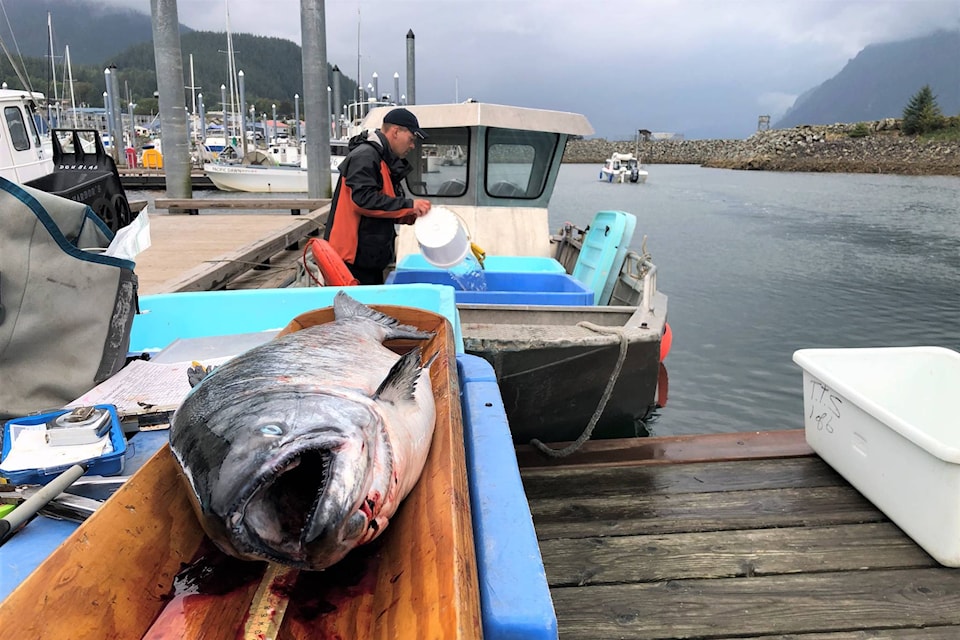Bristol Bay, Alaska has long been considered the greatest Pacific salmon spawning ground on earth. Every year, tens of millions of chinook, sockeye, chum, coho and pink salmon return from the north Pacific to reproduce in the dozens of wild rivers that flow into the bay.
This massive migration brings with it all the nutrients that the salmon have gathered in their years at sea, and deposits it back into the forests, animals, and people who call Bristol Bay home. Along with the ecological benefits of robust native salmon runs, Bristol Bay supports a booming commercial and recreational salmon fishery. The fishery provides tens of thousands of people with employment and supports local communities.

Bristol Bay produces the world’s largest sockeye salmon fishery and one of the most prolific chinook salmon runs left on earth due to the habitat remaining mostly untouched by development. Nearly half of world’s harvest of wild salmon come from the bay. The salmon are integral to the region’s economy and cultural values.
The Bristol Bay fishery is worth $1.5 billion and sustains over 14,000 jobs that include commercial fishermen, lodge owners, guides, processors, and tourism operators. The recreation and tourism industry in Bristol Bay brings in $90 million annually to the state through taxes and licenses from anglers looking for a once in a lifetime Alaskan fishing experience.
Located on the Bering sea in Northwestern Alaska, Bristol Bay and the rivers that flow into it represent true wilderness. The bay and surrounding areas provide idyllic habitat for brown bears, moose, wolves, and bald eagles. Tourists come from around the world to marvel at its natural beauty, but that natural beauty is at risk.
Through the 1980s and 90s, mineral exploration by Cominco (now Teck) began in the Bristol bay area. By 1997, mining experts estimated over 6 billion tons of copper and gold ore deposits were available for extraction and began the permitting process. Northern Dynasty Minerals, Ltd. purchased the extraction rights in 2001 and continued surveying the area to create a comprehensive mining proposal. This proposed project was named Pebble Mine.

Pebble Mine would create new year-round and seasonal job opportunities with steady income and a lower cost of living for the entire region, especially the local communities. The local villages are shrinking and traditional ways of life degraded due to loss of connection with past ways of life. The local employment could provide revenue to improve and maintain community infrastructure.
Pebble Mine would generate $84 million in annual tax and royalty during development and operations. Northern Dynasty Minerals believes the protection of the fisheries and the environment will be ensured by the rigorous environmental review and permitting process. This includes an environmental impact assessment that is required prior to development.
Pebble Mine would be the largest mine in North America. Advocates against the mine say that it runs a high risk of polluting Bristol Bay because of its size, geochemistry, and location. The U.S. Army Corps of Engineers conducted the environmental impact assessment and found the mine would likely cause significant degradation and long-term adverse effects to the waters and fisheries of Bristol Bay, and will not receive a permit under the Clean Water Act.
As of September 2020, the CEO of Pebble Limited Partnership stepped down as secretly recorded tapes released showed executives have continually misled and deceived the public, federal regulators, and Congress in an effort to advance the project.
Despite these findings and strong public opposition, The Pebble Mine project is still a very real possibility. The mine has become a polarizing issue for policymakers, environmentalists, and industrialists alike. Regardless of where someone stands on the political spectrum or if they will ever visit the Bristol Bay area, the question of preservation versus profit has never been more pertinent.
Sam Johnstone and Taylor Spurgeon are second year Recreation, Fish and Wildlife students at Castlegar’s Selkirk College.
